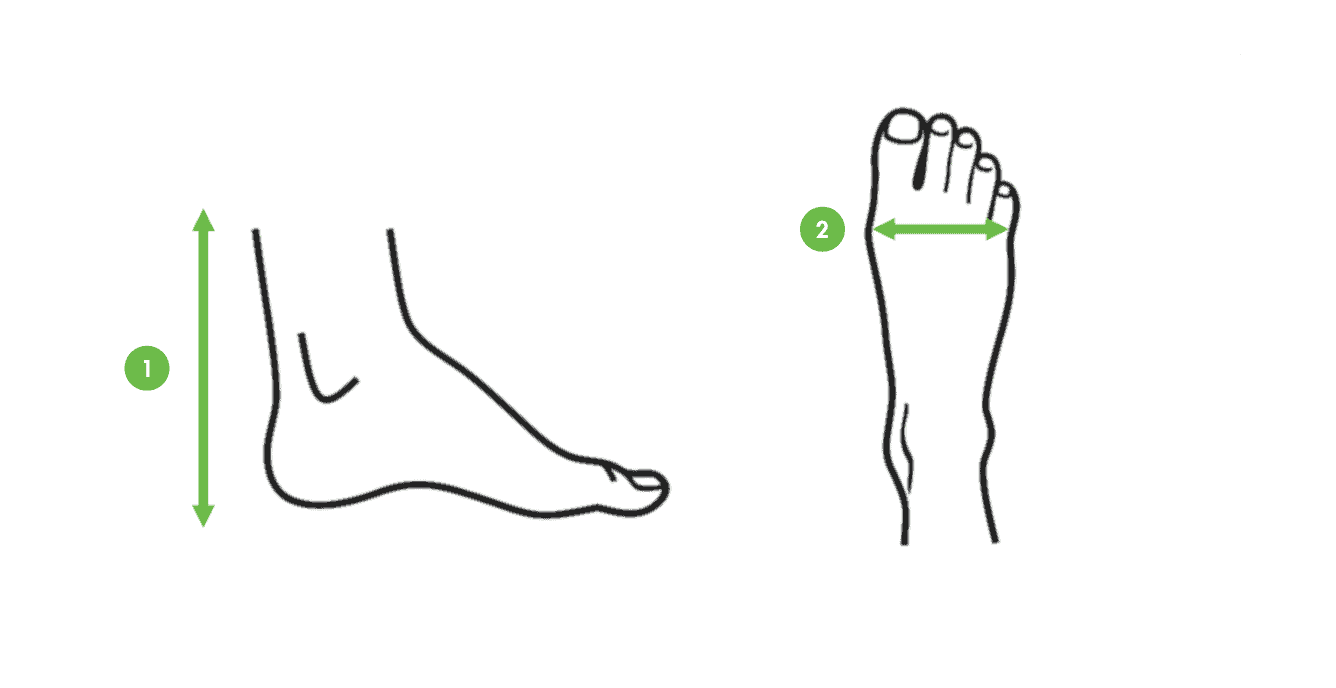If you’re buying shoes online, an accurate measurement of your feet, as well as the shoes, is a must. Shoes that are too loose or too tight are not only uncomfortable but unfashionable too.
The best way to measure a shoe is to place them down carefully on a flat surface, such as a table or floor. However, measuring a pre-existing shoe will only work for brands whose footwear you already own. Otherwise, you will have to measure your own feet and apply the measurements to the sizing guide given by the website or brand.
We’ve laid down a thorough guide on taking measurements for shoes below. Read on to find out more.
Steps To Measure A shoes
- Measuring Shoe Length – Place your shoes on a flat, solid surface, such as a table. Then place the measuring tape on the tip of your shoe and pull it to the heel of the shoe, or till where the shoe ends.
- Measuring Shoe Width – With the shoes on a flat surface, place one tip of the measuring tape on one side of the widest part of the shoe (on the front) and measure it to the other side. The key is to measure across the widest shoe vamp, but it is important to exclude the sole.
- Measuring Shoe Height – Firstly, place the shoes on a flat and solid surface such as a table. Then, place the measuring tape perpendicular to the heel of the shoe and pull it to the edge of the shoe opening. This will give you the height of the shoe. In this case, make sure to include the shoe sole.
- Measuring Shoe Top-line – Put the tip of your measuring tape inside the opening of the shoes and circle it inside. This will give you the top-line measurement of the shoe.
- Measuring Sole Thickness – Putting your shoes on a flat surface, measure the sole thickness by placing the tip of the measuring tape on the bottom edge of the sole and measuring till the top edge.
- Measuring Heel Thickness/Heel Height – For shoes with heels, place the tip of the measuring tape on the bottom edge of the heel and measure the part where the heel is attached to the main body of the shoe.
Steps To Measure Your Body

- Measuring Foot Length- Measuring your foot length is the most important part of taking measurements for shoes since most shoe sizes rely primarily on the measurement of the foot length only. For this, take a piece of paper and put your foot on it. In case your foot is too big, attach another sheet of paper to it, with the ends of both gently overlapping. Then, place your foot onto the paper and, using a marker or a pen, gently trace around the foot, with the pen perpendicular to your foot. Make sure that you are wearing the sock that you will be wearing with the shoe you purchase. Also, put all your weight onto the paper, as it will help give you the most accurate measurement.
- Measuring The Width – Take the measuring tape and carefully wrap it around the widest part of your foot, which is usually around the bunion joint. Mark the point at which the two ends overlap. While making this measurement, make sure that you place all your weight on the foot.
For a step-by-step, visual guide, refer to this instructive video by The Healthy Feet Store:
Tips For Making Measurements
- Ensure that all the measurements are made with the shoes placed on a smooth surface, like a table or floor, and all wrinkles are smoothened out.
- Do not hold the tape measure too tightly or loose while measuring. It should wrap around your body well.
- Make sure that all the measurements are as accurate as possible.
- Consult an international sizing chart as each country or region has its own sizing rules. Brands differ in sizing as well, and many companies are known for having garments that run a size larger. So it is important to match your measurements with their sizing guide.
- Always refer to the sizing guide mentioned by a brand/store.
- Try to take the measurements after a full day of walking as walking tends to increase the size of the foot.
- Be as accurate as possible when taking shoe sizes, and measure till the closest inch.
- Measuring both feet is recommended as our feet tend to be asymmetrical.
To reduce the return rate after a successful sale, we also recommend that you can create a size chart with unit conversion to make your customers pick the unit they are most comfortable thinking in to make a purchase decision.
Or use Kiwi Sizing AI Size Recommender as a size chart tool. It will recommend the most suitable size of products for customers to reduce the return rate, help you decrease the cost of the return, and to create a positive cycle for your e-commerce business.

